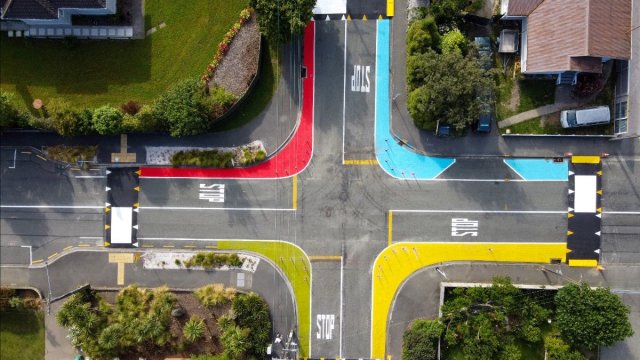Project begins to create safe passage in Nelson South
13/10/2023 3:02pm
The second phase of the Streets for People project gets underway in early 2024, with the installation of a series of trial upgrades including raised crossings on Motueka and Franklyn Street, following pre-engagement with the local community, hospital and Nelson Boys College.
Transport data shows that on average just over 8,000 vehicles use Motueka Street a day, 6,000 more than neighbouring Franklyn Street and Tukuka Street. Since 2018, there have been 32 accidents on Motueka Street between Vanguard Street and Waimea Road. Data shows a cluster of accidents at the intersection of Motueka Street and Tipahi Street.
“Motueka Street is unsafe,” says resident Elizabeth Perrone. “In this area we have the hospital, two pre-schools, a large primary school, a large high school and plenty of residents.
“There’s a high volume of traffic with no safe way to cross Motueka Street. I raised my kids in this area and always had concerns for their safety when they were walking or cycling to school. I also have concerns for my elderly neighbours when they try to navigate turning onto Motueka Street. I’m pleased to hear that there’s safety measures being put in place.”
Streets for People is a series of Waka Kotahi funded projects focused on providing a safe active travel corridor right through the heart of Nelson South. The Streets for People programme allows Council to implement changes that are considered ‘low cost’ and ‘low risk’, with the ability to remove and replace the changes quickly.
Once temporary changes are made, Council can assess what’s working and what’s not. Streets for People places heavy emphasis on community engagement. Council has carried out a number of letter drops and door knocks with residents along the route to explain the project. We’ve held workshops with residents and key stakeholders, including Nelson Hospital, to gather information and feedback.
“We have sound data and transport engineers highlighting where change is required,” says Alec Louverdis Group Infrastructure Manager. “And they are able to use the feedback we receive from residents and users of the area to refine their work. The Streets for People programme allows us to engage with the community, implement change then revise it and modify when and where necessary. The outcome is, and will always be creating a safe transport corridor for all users of the area.”
The project will begin on Motueka Street with an asphalt raised crossing table. The design has been optimised for prams, wheelchair users, walkers and cyclists crossing Motueka Street. It will also be designed in a way to allow the safe passage of cyclists traveling down Motueka Street.
Image: Intersection of Motueka Street and Tipahi Street
The pathway along the west side of Tipahi Street will be widened to allow for pedestrians and a dedicated cycle path.
The intersections of Tipahi Street and Franklyn Street and Kawai Street and Franklyn Street will both be developed to promote safer active transport. Raised crossings will go across Tipahi Street, and Franklyn Street to encourage drivers to reduce their speeds.
Image: Intersection of Tipahi Street and Franklyn Street
Image: Intersection of Kawai Street and Franklyn Street
Planter boxes and road markings will be used along the route of the project to beautify the area and direct parking.
This project builds on the successful changes made in Kawai Street South. By using planter boxes, trees in crates, speed cushions and humps, bollards, signage and road art we’ve seen a significant decrease in speed around the Kawai Street area.
In the five years before the initial project there was a reported 13 car accidents, in the 18 months after the trial began there was a more than 50% reduction in crashes. This came alongside a 30% reduction in through-route traffic and a 20% reduction in speeding in the area.


